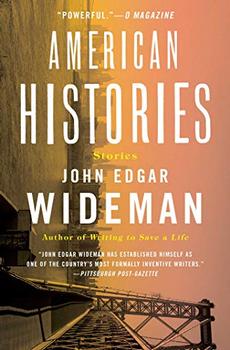Reading Guide Questions

Please be aware that this discussion guide will contain spoilers!
- In the "A Prefatory Note," John Edgar Wideman writes that his guess is that "slavery won't disappear until only two human beings left alive, neither one strong enough to enslave the other" (page 2). What does this statement lead you to believe about Wideman's definition of slavery, and how does that differ from your understanding of the concept?
- In "JB & FD," John Brown and Frederick Douglass, a white and black abolitionist, respectively, each believe in the eradication of slavery, but they disagree about how to get there. What is the effect, at the story's end, of creating a black character named John Brown, after the figure who was, in life, the more militant of the two? How does this complicate the dialogue between the two men?
- "My Dead" describes the narrator's relationship with his brother Otis, or Gene. What do you make of the relationship between the narrator, describing his complex feelings about a man with the author's last name, and the author himself?
- "Bonds" is an unconventional story about labor, with its focus the mother's attempt to delay her child's birth so he won't have an unlucky birthdate. He already has two strikes against him, she thinks—"strike of poor, strike of colored" (page 48)—and a third is too much. What does this unusual evocation of maternal love bring up for you?
- In "Writing Teacher," the narrator and his student, Teresa, work on her story, a story about a young woman of color, a single mother, that the narrator believes his student wants to "help." The narrator implies that Teresa, being white and otherwise privileged, has little authentic understanding of the character she's created. Do you believe that it's impossible, or prohibitively difficult, for a white person to write well about people of color? What mistakes does Teresa make in this story?
- "Williamsburg Bridge" follows a man contemplating suicide. At the end of the story, do you believe the narrator is "cured"? Do you believe that he jumps?
- What's the distinction between Givers and Gratefuls in "Empire"? How does that map onto distinctions in our current society?
- In "Yellow Sea," the narrator asks the reader to "imagine an audience of Precious composed solely of big, dark-skinned, poor, unwed teenage mothers" (page 186). How does this engagement with film compare to the narrator's feelings about watching and being watched in "New Start," in which he and his wife consume episodes of Downton Abbey?
- Death is a theme in many of these stories. "Ghost Dancer," for instance, has the narrator visited by the ghost of a bird he once fed in his garden. What's the emotional resonance of this visitation, coming after stories like "Williamsburg Bridge" and "My Dead"?
- In "Collage," Romare Bearden tells Jean-Michel Basquiat a story from the Italian Renaissance, that artists at that time sometimes intentionally rendered perspective imperfectly because they feared "deep cuts opening like doors into a canvas" (page 203). How do Bearden and Basquiat, in this story, create windows into other realities with their work?
Unless otherwise stated, this discussion guide is reprinted with the permission of Scribner.
Any page references refer to a USA edition of the book, usually the trade paperback version, and may vary in other editions.

 Book Reviewed by:
Book Reviewed by:





